4 Tips For The Best Photographic Safari
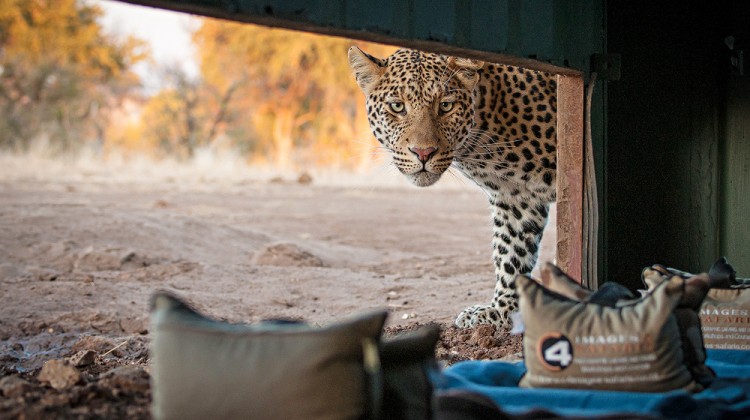
All safaris offer the chance for great photographs. Good guides will get you closer to wildlife than you might imagine. In fact you don’t necessarily even need a long lens as mentioned in my blog on 6 Best Cameras For A Safari. Your biggest problem is likely to be sorting the best ones from the hundreds of photos you have taken.
If you are a keen photographer the following 4 tips will help you choose the best camp or photographic safari to get those key wildlife shots.
1. Camps with photographic hides
You might think that photographic hides are just for bird watchers and documentary film makers, but the best ones will provide wildlife photo opportunities you won’t get elsewhere. Among our favourites are those in the following safari camps:
One of a number of hide options at Mashatu, in Botswana’s Tuli area, is a ground level hide offering a unique perspective on wildlife visiting the waterhole. You can safely photograph elephants while at the same level as their huge feet.
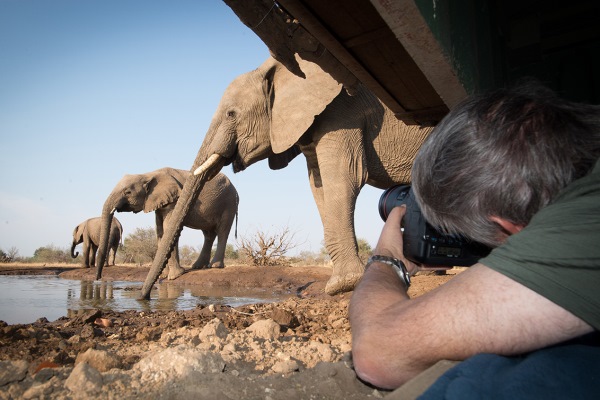
Elephants and photographer at the C4 Images hide at Mashatu waterhole
At Jaci’s Lodges, in the Madikwe Reserve in South Africa, you’re not just at the water’s edge in their ‘terrapin hide’ but in the middle of the waterhole. Access for photographers is via an underground/underwater tunnel and the hide is set up with custom Gimpro arms with panoramic heads.
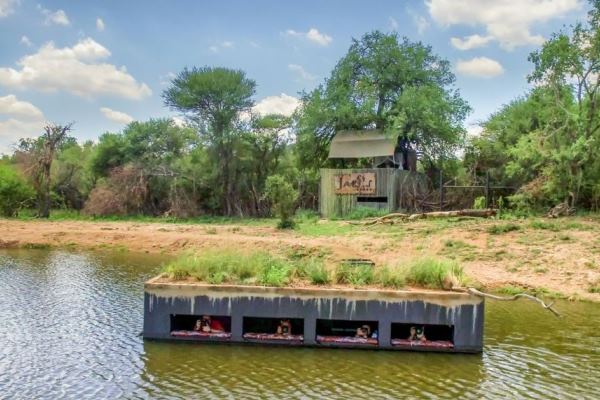
Terrapin hide at Jacis Lodges waterhole
The ‘carmine hide’ is one of the choices with Shenton Safaris and sits on the Luangwa River in Zambia. It is put in place in September to allow photographers to get a great view of hundreds of carmine bee-eaters nesting in the riverbank.
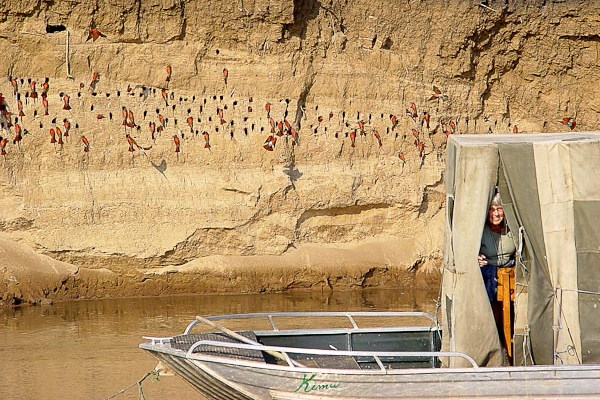
Carmine bee-eater hide at Kaingo Camp, South Luangwa, Zambia
2. Specialist photographic safari vehicles
The safari camps we recommend typically use open-sided vehicles which make wildlife photography easy. At an animal sighting the engine is normally turned off to reduce vibration. There’s not room in a vehicle for tripods, and a monopod can limit your field of vision, but bean bags are often provided for support.
Jaci’s Lodges have worked with a specialist, so Gimpro arms & double pano heads can be fitted to any of their safari vehicles. These ensure a steady hand, especially when using heavy lenses. Jacis also have a specialist photographic vehicle that goes out morning and evening with both a field guide and a photographic guide. These drives include the use of DSLR camera and a 100 – 400 telephoto lens.
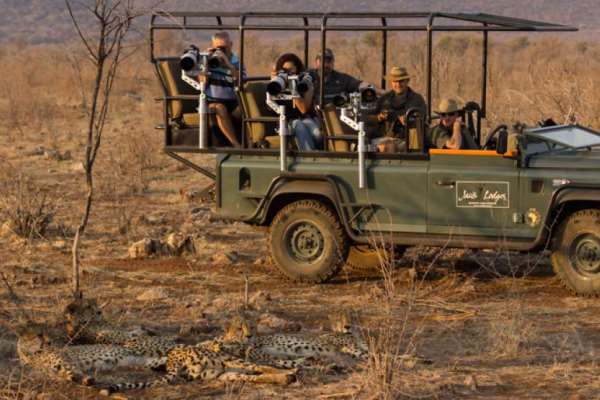
Specialist photographic vehicle at Jacis Lodges with cheetahs
The C4 photographic vehicle at Mashatu employs sliding gimble heads for comfortable, well supported wildlife photography in a 270 degree radius.
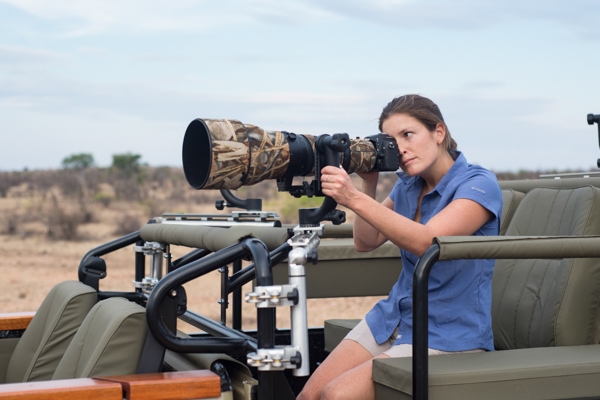
C4 Images specialist photographic vehicle at Mashatu, Tuli, Botswana
There are also bean bag arches for a fast first shot. Inside the vehicle dustproof storage compartments keep lenses and camera bodies accessible but safe.
3. Free photographic equipment to use
Dereck and Beverly Joubert, co-founders of Great Plains Conservation, are acclaimed wildlife filmmakers who have made 25 films for National Geographic, including ‘The Last Lions’.
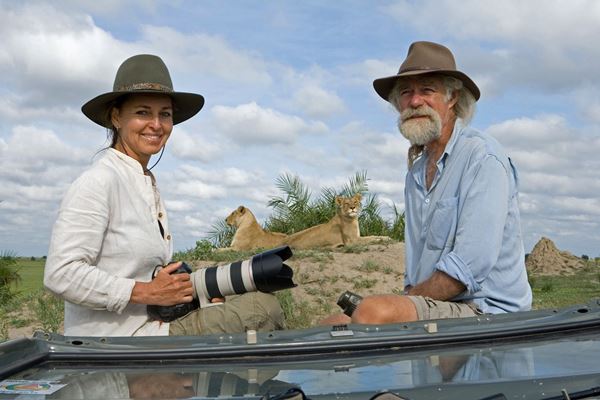
Dereck and Beverly Joubert at Duba Plains Camp, Okavango Delta, Botswana
Their passion for capturing wildlife images on safari is contagious. They offer a professional Canon camera body and lens kit in each tent at Zarafa Camp in Botswana and Mara Plains Camp in Kenya for complimentary use. The same photography equipment is available to those taking a private safari vehicle at Ol Donyo Lodge.
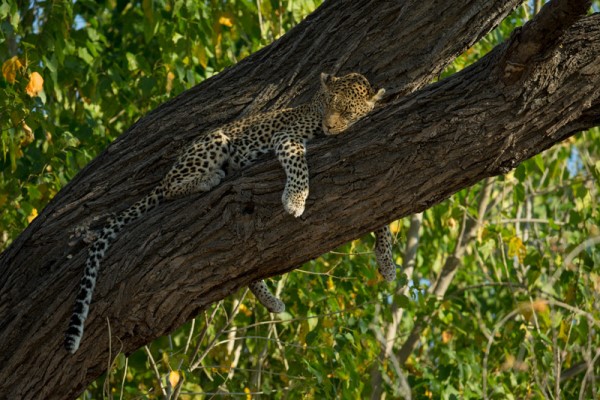
Zarafa leopard, Okavango Delta, Botswana, Great Plains Conservation
4. Specialist photographic trips and wildlife drives
For keen photographers looking to join like minded souls, there are a number of wildlife photography safaris debating on fixed dates through the year.
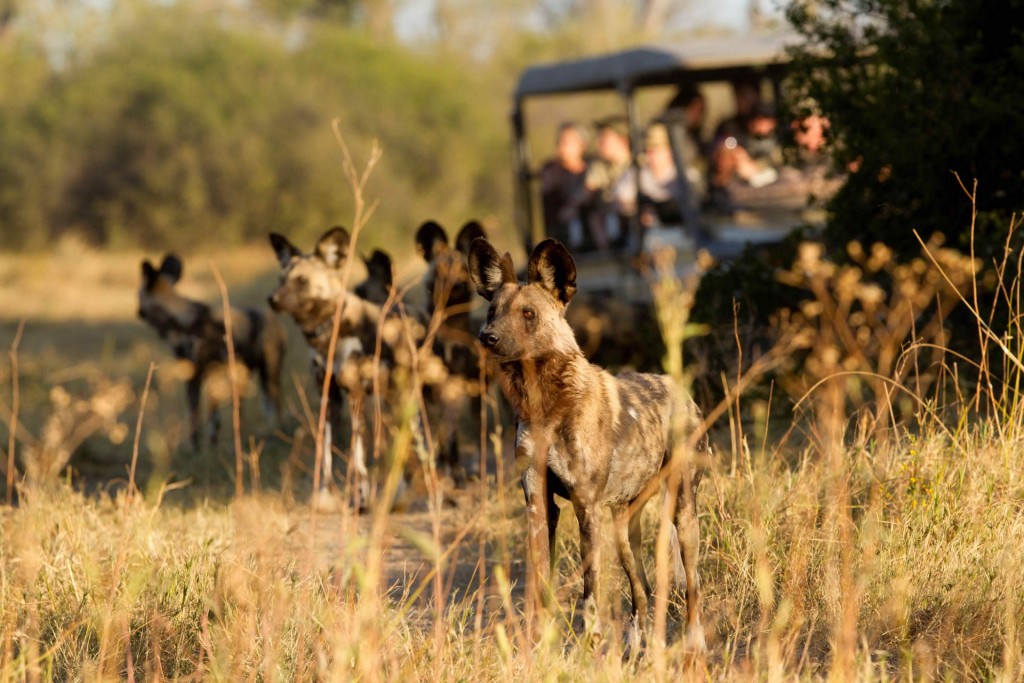
Photographing wild dogs on a Letaka Safaris trip
Letaka Safaris run mobile safaris across Botswana, visiting the key safari areas of the country. Certain trips throughout the year are photographic trips. These have specialist guides who will ensure you’re in the right place for the photo and guide you in the use of your camera and editing tools.
Another option is to go to a camp when a photographer is ‘in residence’. These courses are typically a week long and all sorts of photographic techniques are demonstrated before photographers get the chance to try and emulate them.
At Jaci’s Lodges you’d be hosted on a number of weeks during the year by Andrew Aveley. His photographic safaris use a custom photographic vehicle, and include the use of a Canon or Nikon 400mm lens, teaching everything from basic operations of the equipment to aperture, ISO, composition, as well as being available to guests in the editing studio after photographic safaris.
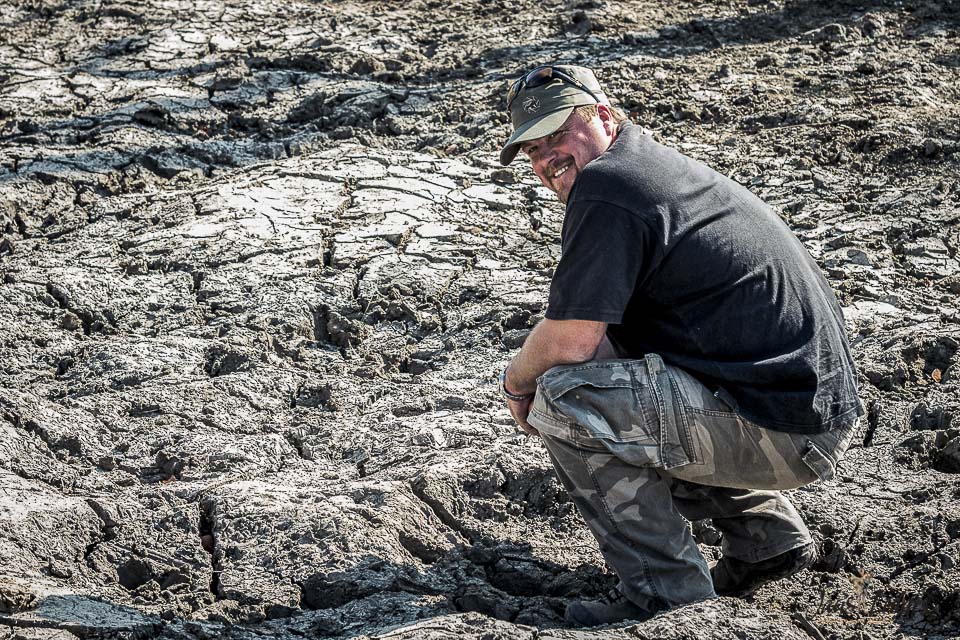
Andrew Aveley resident at Jacis Safaris for photo tuition @AndrewAveley
Andrew will be at Jaci’s Lodges for eight residency stints throughout spring thorough to autumn, with each residency ranging from 10 – 14 days.
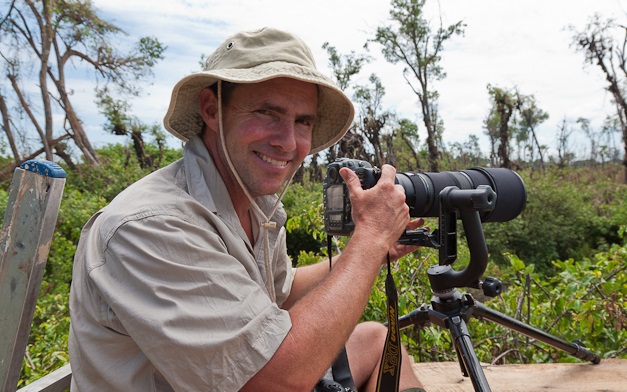
David Rogers a well-known wildlife photographer and author of several books @DR_Photographic
David Rogers is a well-known wildlife photographer and author of several books. He leads a photographic safari for Robin Pope Safaris from their Nkwali Camp in Zambia. David accompanies guests on wildlife drives to give advice, analyse results, and also look at how best to use Adobe Lightroom.
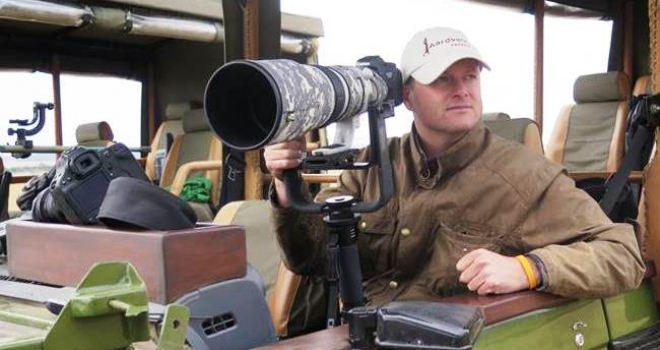
Photographer David Murray @SafariPhotoGraf
Wild Studio is the latest photographic offering from Great Plains Conservation and will be available from at Selinda Camp, Botswana and Ol Donyo Lodge and Mara Expedition Camp in Kenya. They provide a range of fixed date photographic workshops, designed for every level of photography, from beginner through to professional. Professional photographers, specialists in African wildlife photography, will be hosting these, including our very own David Murray.
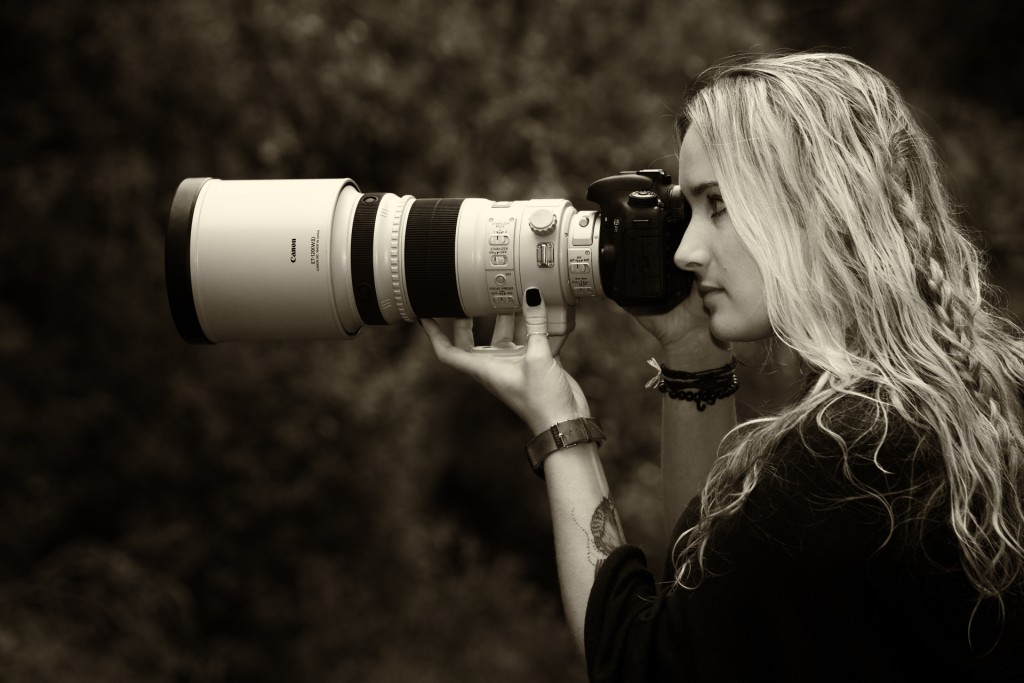
Photographer Penny Robartes @PennyRobartes
Penny Robartes, professional fine art wildlife photographer, will join the Alex Walker’s Serian team as photographer in residence for mentoring on how to capture high quality wildlife images. She will be based in Serian Masai Mara and in the Serengeti North Camp. Penny is also available to guide photographic workshops with individuals or groups at any time (if pre booked and paid for as a specialist guide). As an added bonus Serian camps offer private vehicles for all guests, which is ideal for photographers that wish to have the freedom to choose where and when on wildlife drives.
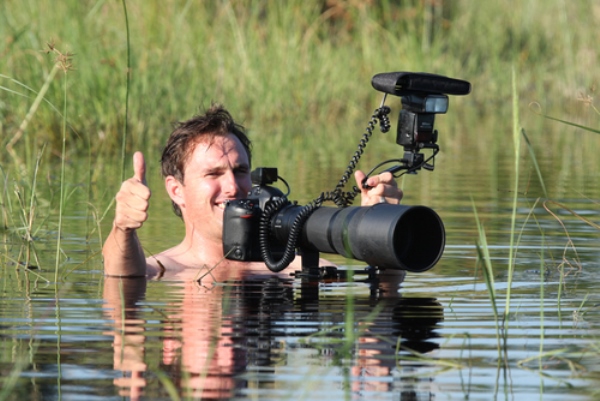
Photographer Greg Du Toit @GregDuToit
Greg du Toit, 2013 Wildlife Photographer of the Year will be on several safaris offering a unique opportunity to participate in a photographic workshops in Kenya, Tanzania, Botswana and South Africa. Greg will be the in-house resident photographic guide. During this time he will cover various aspects of photography including:
- Camera setup – aperture, shutter, ISO, white balance, metering, shooting in low light, and other technical aspects;
- Wildlife photography tips – composition, achieving correct focus on moving wildlife;
- Macro photography tips – techniques;
- Photo editing skills – critique on personal photos and how to edit to achieve final product;
- Evening presentations – Greg will give a talk on some evenings about his years of wildlife photography.
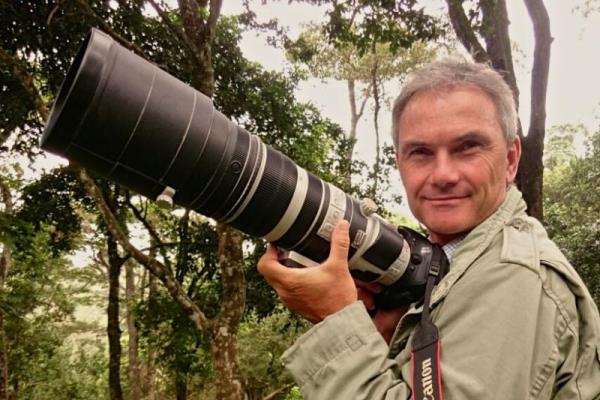
Photographer Warren Samuels @BigCatWarren
Warren Samuels, BBC Big Cat Diary principle cameraman will join Governors Private Camps in the Masai Mara, Kenya. During this time he will cover various aspects of photography including:
- Photographic instruction given in the car each day
- Evening slide shows on wildlife photography illustrating some examples of how to take good wildlife pictures
- Client’s image appraisal sessions
- Screening on wildlife documentaries that Warren has been involved in, which he will present together with a brief lecture on the “making of” of each particular film. His credits include Big Cat Week, Big Cat Live, Human Planet, Truth about Lions, Secret Life of Elephants and Planet Earth Live.
- For those that would like it, Warren will be available to provide extra photographic coaching out side of game drive hours in the camp photographic gallery.
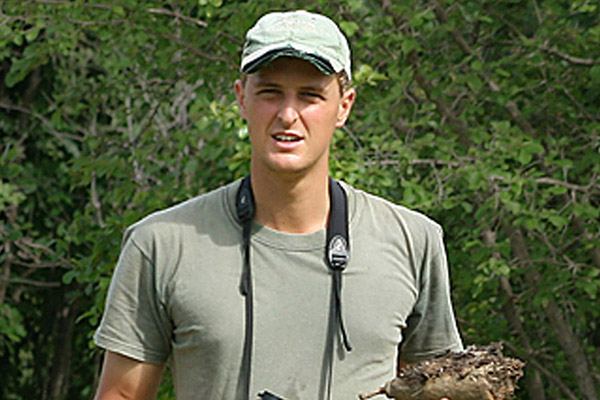
Photographer Edward Selfe @edwardselfe
Edward Selfe with Robin Pope Safaris will be offering photographic safaris in the South Luangwa staying at Tena Tena and Nsefu in the heart of the Nsefu sector. In August expect to see lion, leopard, elephant, giraffe, buffalo and hippos who make daily appearances, as well as bird life like the Pel’s fishing owl and Carmine bee-eaters. This rich safari area offers great photo opportunities as well as a classic safari experience. Edward has lived and guided here since 2009, he has a blend of both talents, a Luangwa qualified guide and as photographer. Limited to just four guests each person can:
- ask questions and receive one-on-one help
- enjoy Robin Popes famous hospitality
- safari in some of the most impressive stretches of the Luangwa River
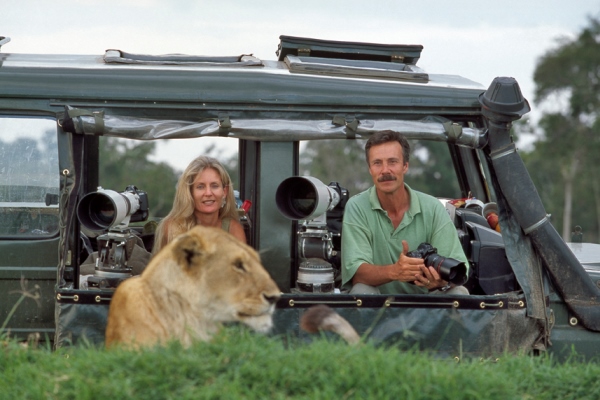
Jonathan Scott and wife Angie, wildlife photographers
Jonathan Scott, BBC veteran has been a permanent feature of the Celebration Safari for the last ten years, and his experience presenting Big Cat Diary which is filmed in the Masai Mara enables him to share his knowledge of some of the animals he came to know and respect. The photo safari is at Little Governor’s Camp.
- Shared 4WD vehicle hosted by Jonathan and wife Angie Scott on a rotational basis
- Wildlife presentations, workshops and entertainment hosted by Clive Thomas, Jonathon Scott, Giles Clark and David Newton.
- BBC’s Giles Clark, presenter of BBC’s ‘Tigers About the House’ and the sequel ‘Tigers About the House – What Happened and ‘Animal Babies’ which was partly filmed in the Masai Mara.
- New hosts this year include photographer David Newton, a Canon envoy and Scandisk Ambassador. David will be helping on game drives and in camp with your still and moving photography. David knows just how to get the best out of a camera as he is one of the people Canon ask to put new cameras and lenses through their paces. He is an expert with filters, and will have some with him to share on game drives. He will also be setting some camera traps around camp so we can see the range of game and predators that come in once we are safely tucked up in your comfy beds.
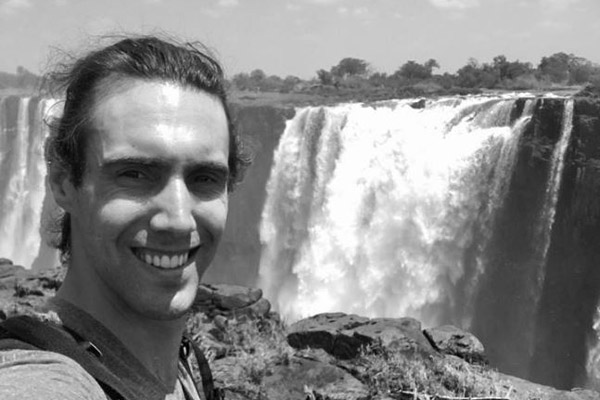
Matt Armstrong, specialist photographic safari guide
Matt Armstrong, specialist photographic safari guide will be based in the Norman Carr Safaris South Luangwa camps. Matt has spent years working as a guide throughout Africa and is returning to the place he loves most; the Luangwa Valley. He is staying in residence at Norman Carr Safaris and will be offering free photographic tuition to guests staying at these camps.
Any questions?
If you’ve got this far and not found an answer to a question you have, or you think there’s something more about a specialist photograph safari that we should have included, please ask in the comments section below, or pop us an email. We’ll be sure to reply and may amend the article to include our answer.
What next?
Whichever way you choose to capture photos on your safari holiday, we’re happy to help with advice. We’ve got keen photographers among the team at Aardvark Safaris for the relatively easy stuff, and are pleased to be working with David Murray, a professional photographer based somewhere between the UK and Africa, for the tougher, geeky questions.
Please give us a call or drop us an email and we will do the rest.
Leave a Reply